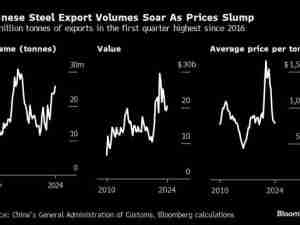The implementation of the United States-Central America-Dominican Republic Free Trade Agreement (CAFTA-DR) provides US manufacturing companies with a promising set of trade and investment opportunities, according to a new Manufacturers Alliance/MAPI report. In Investigating the Positive Impact on US Exports and Investments of the US-Central America-Dominican Republic Free Trade Agreement (ER-620e), report author and Economist Fernando D. Sedano concludes that US exports will grow rapidly as the region's tariffs on US products are eliminated and as more stable and growing economies increase their demand for technologically advanced products.
Such products are produced at a comparative advantage in the United States. US manufacturers are the biggest beneficiaries as the CAFTA-DR immediately eliminates the region's tariffs on more than 80% of US exports of consumer and industrial goods. As evidence, even though only four of six countries have implemented the agreement to date, US exports increased 16.8% from January to September 2006, while US imports rose 3.2%. With their recent growth, Central American countries and the Dominican Republic now represent the 13th largest US export market in the world. In addition, the CAFTA-DR also should exert a positive impact on US direct investments in the region by providing a more secure and predictable legal framework.
Sedano writes that key US exports such as information technology products have the best growth potential. Overall, 99% of US exports of electronics and instrumentation receive immediate duty-free access under the CAFTA-DR, which compares to pre-CAFTA-DR average tariffs ranging from 2.1% to 5.5%. Other sectors showing bright export prospects for US manufacturing firms include capital goods, chemicals, environmental technologies, electrical power generation and distribution equipment, and automotive parts and services equipment.
Family remittances and foreign direct investment (FDI) also will factor into a strengthening regional economic outlook. Remittances to CAFTA-DR countries, earnings that migrants send back to their countries of origin, more than doubled from $4.8 billion in 2000 to $11 billion in 2005. Such remittances help stimulate economic growth, reduce poverty, increase savings and consumer spending, and create macroeconomic stability. FDI to the region shows solid potential, as the CAFTA-DR gives US companies the right to establish, acquire, and operate investments in the region on equal footing with local investors.
While FDI remained rather flat from 2000-2005, increasing from $2.3 billion in 2000 to $2.9 billion in 2005, half of that growth occurred in 2005 as new opportunities emerged with the signing of the CAFTA-DR. 'The CAFTA-DR should help US manufacturers in addition to offering the possibility of more regular and sustainable economic growth in Central America and the Dominican Republic,' Sedano says. 'Clearly, higher US exports and an economically and politically stable Central American region are positive developments for the United States. The staying power of the CAFTA-DR, however, will depend on the region's success in mitigating the extreme poverty affecting the majority of the population.'






